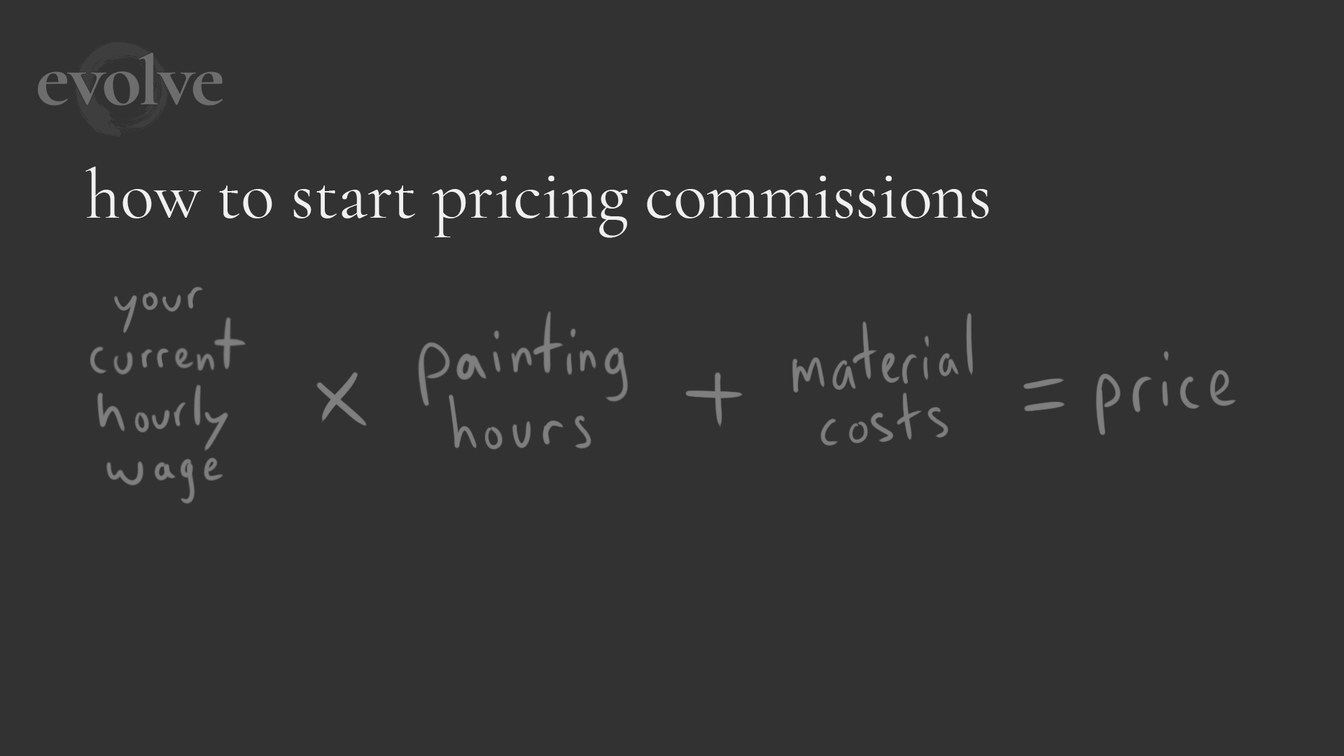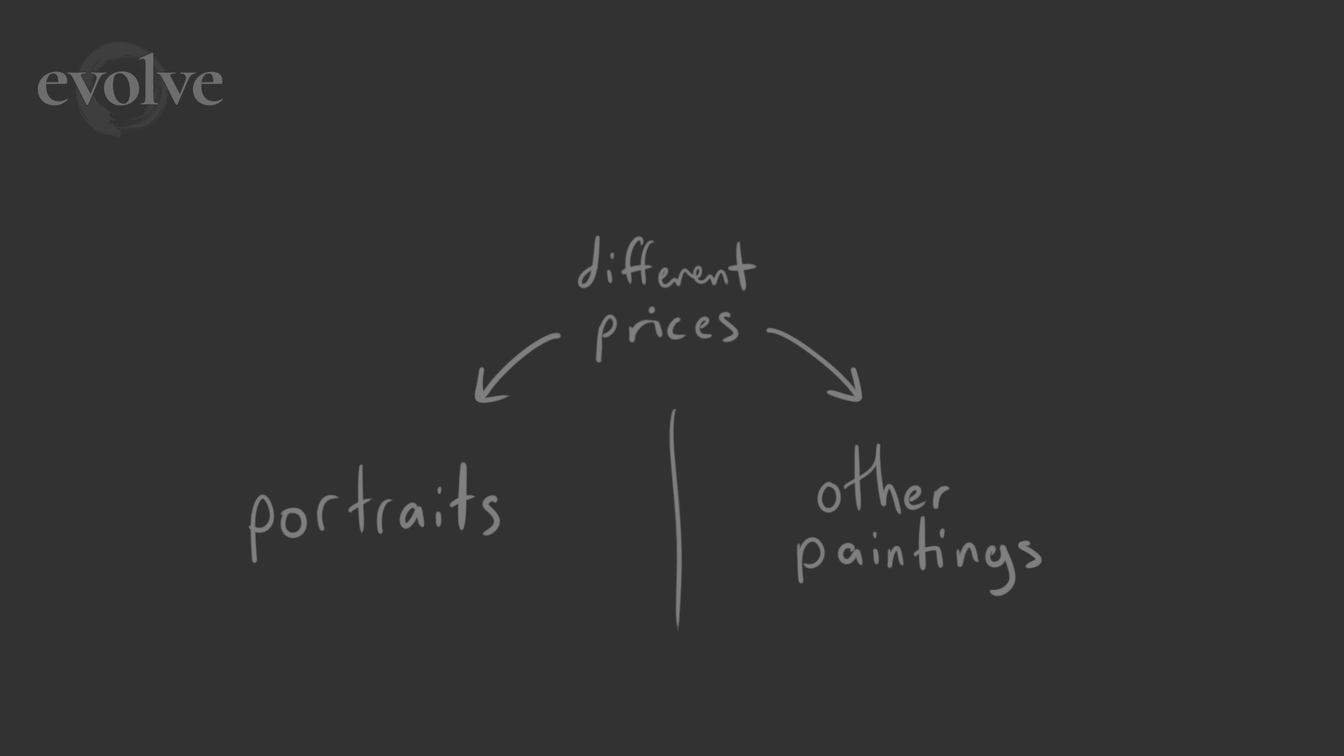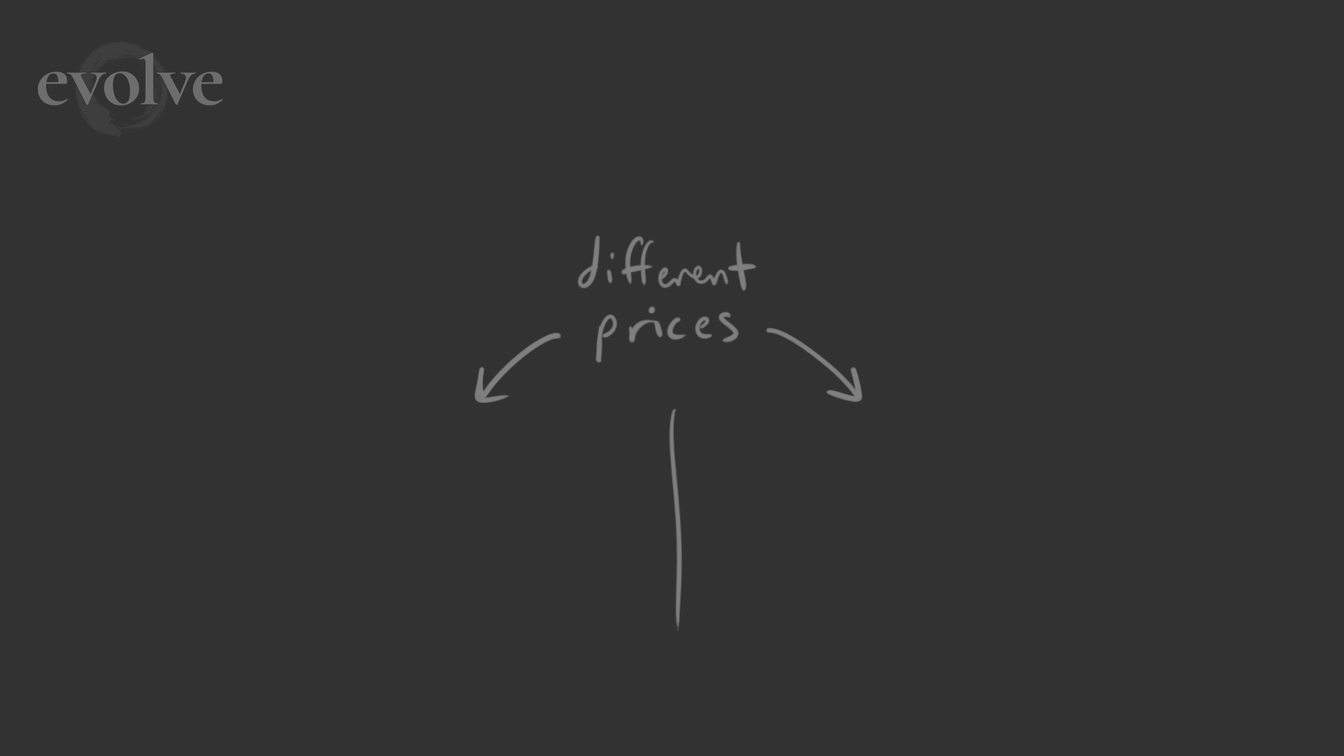Learn how to price portrait paintings so that they can sell easily with practical advice from master portraitist Kevin Murphy.
Formula to Price Portrait Paintings

This simple formula for setting your portrait prices is a great starting point and allows flexibility to elevate your price over time.
When my (Kevin Murphy, Evolve Artist founder and master portraitist) students are selling their work, I encourage them to take this approach to price portrait paintings. It works beautifully, and allows you to elevate your price.
You can stand your ground on your price because you know where it came from. It’s not something that you just pull out of thin air because you like a painting.
To begin, students need to know what their time is worth. If you have a job and you make $20 an hour, you’re giving your time away for $20 an hour. You’ve set the stage for what your time is worth. Now we just need to add in the painting element.

Knowing what your time is worth will lay the foundation as you price your portrait paintings.
For example, if you do a painting and it takes 10 hours, at $20 an hour, it’s $200 plus the cost of your materials. It’s that simple.
The idea is that if you’re working a job at 40 hours a week, making $20 an hour, and you can get rid of that job to paint 40 hours a week and make the same amount of money, you’re now moving in the direction of a career.
As you sell more pieces, you can slowly bring your price up.
The idea is that if you’re working a job at 40 hours a week, making $20 an hour, and you can get rid of that job to paint 40 hours a week and make the same amount of money, you’re now moving in the direction of a career.
KEVIN MURPHY
Evolve Founder & Master Portraitist
I see this in our art academy often. Some people do a portrait in 10 hours, and those are the slow people. The people who are fast can turn around a portrait in about three to 4 hours.
Speed comes with practice and proficiency. And as you speed up, and are producing consistent quality art you can start talking about being able to build a career. With practice you might be able to complete portraits in only 4 hours, and that’s a painting you can sell for $200. A $200 portrait is an absolute steal from your customer’s perspective, you’ll find they’re easy to sell at this price point.
There are times at the art academy where we’ll make an offer saying, “Hey, we have a few of the high school kids who are looking to do portrait commissions, and I know that it’s going to take them between 4 to 5 hours, so we’re charging $300 a portrait.” You would think we’d get commissions for two or three portraits, but, in fact, we’ll be inundated with orders. We’ll get 17 portraits. That’s because it’s a beautiful piece of art at a very reasonable price.
Do Not Price Portrait Paintings Differently Than Others

Don’t falsely elevate a portrait by pricing it differently than other paintings.
It’s also important to realize that a portrait is no different than any other painting. You falsely elevate a portrait by changing the price structure on it. How do you look someone in the face and say, “Well, this painting is worth $700 and something else is worth $300?” A painting is a painting. We don’t want to think of a portrait as something special.
Pricing Commissions

You can create a separate price scale for painting portrait commissions.
The exception to portrait pricing is with commissions. You might have a price scale for paintings that you make on your own because you’re painting what you want and a separate price scale for paintings that are commissioned by others.
Say, for example, you like painting red barns. You can sell those at $20 an hour and sell commissioned work at $35 an hour. Then, if somebody wants to commission a blue barn, you paint the blue barn and charge $35 an hour because it is a commission. A commissioned portrait, then, would fall into that category.
Raising Your Painting Prices
You want to be very careful about giving portraits this elevated status. If you’re building a career for yourself, especially in portraiture, start with a price that you can justify as an hourly wage. Once you establish yourself and you see you’re getting enough work, then you can raise your price. You may lose some potential clients, but the elevated price will also allow you to balance out the income.
Once that levels out, you can raise the price again. You’ll slowly raise it, getting less and less work, but making equal or more money. Eventually, you’ll find yourself making a nice amount of money per piece, and you’re not killing yourself working day and night.
Final Thoughts on How to Price Portrait Paintings
That’s your master’s guide on how to price portrait paintings. This is the sixth post from our Master’s Guide to Painting Better Portraits series. Subscribe to stay posted!
Read the previous posts in the series:
Master’s Guide #1: Where to Start a PortraitMaster’s Guide #2: Simplicity in Portrait PaintingMaster’s Guide #3: How to Build Confidence in Portrait PaintingMaster’s Guide #4: How to Capture the Likeness of a FaceMaster’s Guide #5: Quickest Method to Improve Your Portrait Painting SkillsMaster’s Guide #7: How to Get Portrait CommissionsMaster’s Guide #8: Are Today’s Portraitists Better Than the Old Masters?
If you found this post insightful and you want to get more content like this, then check us out on YouTube and follow us on Instagram.
Happy painting!
